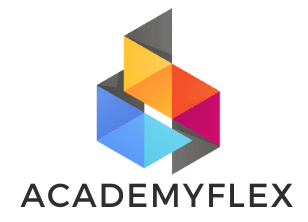Cost accounting in manufacturing
How can a furniture company price a custom sofa without knowing every hidden cost involved?
Manufacturing cost accounting is key to tracking every dollar spent on making products. It helps businesses set prices, control costs, and find ways to improve. It’s not just about spreadsheets; it’s a guide to making money.
Cost accounting breaks down costs into three main parts: direct materials, labor, and overhead. For example, the steel in car parts (materials), the wages of factory workers (labor), or the electricity for machines (overhead). Every detail is important for figuring out the real cost of making something.
New tech makes tracking data easier, but businesses still make mistakes. They might ignore hidden costs or stick to the same pricing too long. Find out how using accurate systems can help make better choices.
Key Takeaways
- Manufacturing cost accounting tracks raw materials, labor, and overhead to calculate true production costs.
- Errors like oversimplifying costs or ignoring changing market conditions hurt profit margins.
- Technology streamlines cost tracking but requires accurate data to work effectively.
- Key metrics like COGS and inventory levels reveal where savings or pricing adjustments are needed.
- Methods like activity-based costing or standard costing offer tailored solutions for different industries.
Understanding the Fundamentals of Manufacturing Cost Accounting
Manufacturing cost accounting helps companies track all production expenses. It shows how costs go from raw materials to finished goods. For cost accounting for manufacturers, it starts with defining costs and ends with making strategic decisions. Let’s see how it works.
Definition and Core Principles
At its core, manufacturing cost accounting breaks down expenses into three main areas: direct materials, direct labor, and overhead. Here’s what makes this system work:
- Cost Objects: Products or projects that use resources.
- Cost Allocation: Spreads indirect costs like utilities fairly among products.
- Cost Classifications: Divides costs into direct (like materials and wages) and indirect (like maintenance and rent).
| Cost Type | Examples | Role |
|---|---|---|
| Direct Materials | Metal sheets, wood, or electronics | Directly tied to product creation |
| Direct Labor | Welder wages, assembly line pay | Tracks labor tied to specific products |
| Manufacturing Overhead | Factory rent, equipment maintenance | Shared costs allocated across products |
The Evolution of Cost Accounting in Manufacturing
Early methods used manual ledgers. Now, manufacturing cost accounting uses ERP software and real-time data. Key milestones include:
- 1900s: Manual record-keeping for inventory and labor
- 1980s: Computerized systems for cost tracking
- 2000s: Integration with ERP systems for real-time insights
How Cost Accounting Differs from Financial Accounting
Financial accounting reports to investors, while cost accounting for manufacturers looks inward. Key differences:
- Financial Accounting: External reporting for taxes and audits
- Cost Accounting: Internal tool for pricing, waste reduction, and profit optimization
Knowing these differences helps manufacturers use data to cut costs and increase margins. With these basics, the next sections will explore how these principles shape everyday decisions.
Why Cost Accounting in Manufacturing Matters to Your Bottom Line
For manufacturers, cost accounting for manufacturers is more than just tracking expenses. It’s a key to making more money. Accurate production cost accounting uncovers hidden problems and chances to save. For example, knowing the exact cost of materials and labor helps set prices that are both competitive and profitable.
Without this clear view, businesses might pay too much for supplies or sell products too cheaply.
| Cost Type | Examples | Impact on Profit |
|---|---|---|
| Direct Materials | Steel, plastics, textiles | Overbuying increases waste; precise tracking reduces excess |
| Direct Labor | Welder wages, assembly line hours | Optimizing labor hours cuts overhead costs |
| Overhead Costs | Utility bills, equipment maintenance | Allocating overhead fairly avoids skewed product pricing |
Manufacturers with modern production cost accounting software can quickly spot trends. For instance, tracking machine downtime through ERP systems can reveal big savings. A 2023 study by Deloitte showed companies with good cost accounting systems make 15–20% more profit.
On the other hand, bad data can lead to bad choices. This includes keeping unprofitable products or thinking you can make more than you can.
Every dollar saved through better cost analysis goes straight to the bottom line. By using the latest technology and always looking to improve, manufacturers can turn cost awareness into a strong advantage.
The Three Primary Types of Manufacturing Costs
Production cost accounting breaks down costs into three main groups. Knowing these groups is crucial for improving cost accounting in manufacturing. Let’s explore each type and how they affect profits.
Direct Materials: Tracking and Management
Direct materials are raw goods like steel, wood, and plastic used in making products. Companies need to keep track of costs for shipping, storage, and waste. For example, a car factory tracks steel use per car with software.
The Oliver Wyman 2022 survey found that materials cost 30-40% of total expenses in aviation maintenance. This shows how important they are in budget planning.
Direct Labor: Calculation and Optimization
Direct labor costs include wages, benefits, and taxes for workers making products. Airlines spend 15-20% of their labor budget on quality control teams. Good time tracking systems help find and fix bottlenecks.
Tools like automated time clocks help avoid mistakes. They make sure only tasks that add value are counted as direct labor.
Manufacturing Overhead: Identification and Allocation
Overhead costs, like utilities, rent, and equipment depreciation, make up 20-30% of aviation maintenance budgets. It’s important to allocate these costs correctly. For example, spreading $2,500 monthly rent over 500 units helps calculate product costs accurately.
Digital platforms make it easier to track indirect expenses like lubricants and safety gear.
Understanding these three areas through cost accounting in manufacturing systems helps find ways to save money. Airlines that use advanced production cost accounting cut material waste by 12%. This shows the benefits of careful management.
Traditional vs. Modern Cost Accounting Methodologies
Cost accounting in manufacturing has many methods, each with its own strengths. Traditional methods like job order and process costing are still important. On the other hand, modern tools like activity-based costing (ABC) provide deeper insights. Let’s look at how these systems differ and which one fits your business needs.
Job Order Costing: When and How to Implement
Job order costing is perfect for custom manufacturing where each project is unique. For example, a company making special machinery for clients tracks costs for each job. This method is best for making a few items that are different from each other.
Steps include assigning cost codes, tracking material usage, and figuring out overhead costs for each project.
Process Costing: Ideal Applications
Process costing is key for making lots of the same thing. Think of food or chemical plants where the same product goes through many steps. Costs are spread out evenly, making it great for industries like pharmaceuticals or textiles.
Departments track costs monthly, making it easy to allocate costs for products that are the same.
Activity-Based Costing: Breaking Down the Benefits
Activity-based costing changes the game by linking overhead to specific activities. Studies in Journal of Management Accounting Research (2014) and The Accounting Review (2015) show ABC’s power in finding cost drivers. Tools like SAP Business One or Oracle NetSuite make this easier.
Unlike traditional methods that use direct labor hours, ABC ties costs to activities. For example, if 60% of overhead comes from design changes, ABC assigns costs correctly. Though it’s complex, ABC’s accuracy helps with long-term planning. Modern manufacturing often uses traditional methods for day-to-day tracking and ABC for big-picture planning.
Choosing a cost accounting method depends on your product and how complex it is. ABC’s precision is great for industries with high indirect costs. Traditional methods are better for places with low overhead costs.
Cost Accounting in Manufacturing: Key Processes and Workflows
Effective manufacturing cost accounting starts with clear steps. It turns raw data into useful insights. The first step is setting standard costs for materials, labor, and overhead. This helps compare actual spending to targets.
Next, tracking actual costs in real-time is key. This includes direct materials usage and factory overhead. Analyzing variances between planned and actual costs shows where improvements are needed.
- Standard Costing Setup: Define expected costs for materials, labor hours, and overhead rates.
- Actual Cost Tracking: Use sensors and ERP systems to log real-time data on production inputs.
- Variance Analysis: Compare actual vs. standard costs to identify overages or savings.
- Product Costing Reports: Calculate total costs per product line to price items competitively.
- Management Reporting: Share insights with stakeholders via dashboards and monthly summaries.
Digital tools like IoT-enabled sensors and cloud-based ERP platforms make these steps easier. For example, IoT devices automatically log material usage. ERP systems instantly flag variances. This reduces errors and speeds up decision-making.
Manufacturing cost accounting workflows need to keep up with today’s demands. Real-time tracking lets companies like Tesla and Boeing adjust production quickly. By standardizing and using technology, cost accounting becomes a strategic advantage, not just a task.
Streamlined workflows let teams focus on improving margins and growing efficiently.
Implementing Cost Collection Systems for Manufacturing Environments
Modern production cost accounting needs systems that match today’s complex supply chains and new technologies. For cost accounting for manufacturers, the choice between manual and automated methods is key. Many still use spreadsheets or paper, but IoT sensors and cloud tools can change the game.

Manual vs. Automated Systems
Choosing tools is a big decision for manufacturers. Manual methods might work for small shops but can lead to mistakes in big operations. Automated tools like RFID or barcode scanners cut down on errors but cost more upfront. Important factors include:
– How accurate you need your bills of materials
– How much training your employees need
– When you’ll see a return on investment for new tech
ERP Integration Essentials
Connecting cost data to ERP systems brings together financial and operational info. For a successful link-up, you need:
– To match costing methods (like FIFO or standard costing) with ERP modules
– To align with activity-based costing workflows
– To make sure data flows from the shop floor to financial reports in real-time
Real-Time Tracking Innovations
Using IoT devices gives instant insights into overhead and material use. Dashboards show variances in real-time, helping make changes before costs rise. Systems like MES connect shop floor activities with production cost accounting processes.
Whether you’re updating old systems or starting anew, knowing your goals and workflows is crucial. Focus on training users and working together across departments to get the most from these investments.
Cost Allocation Strategies to Improve Manufacturing Decisions
Effective production cost accounting needs smart cost allocation strategies. By accurately spreading out costs like rent, utilities, and labor, manufacturers get clear on product profits and resource use. This helps make sure decisions match actual costs, avoiding hidden financial traps.
- Direct Allocation: Assign costs directly to departments or products (e.g., IT costs per user count).
- Activity-Based Costing (ABC): Links overheads to activities driving costs, like machine hours or production runs.
- Multi-Dimensional Allocation: Combines factors like product type and location to refine cost visibility.
- Automation Tools: Software streamlines real-time tracking, reducing manual errors in cost management in manufacturing.
For example, a furniture maker might allocate wood costs based on usage but assign rent via square footage. This shows the real costs of products, helping set prices and adjust resources. Bad allocation can confuse profit analysis—charging too much for one product and not enough for another.
Best practices include: defining clear cost objects, choosing allocation bases tied to actual usage (e.g., labor hours, energy consumption), and checking methods yearly. Being consistent ensures reliable data for budgeting and forecasts. Modern systems update automatically, keeping up with changing workflows.
Choosing the right strategy improves decision-making. When costs are fairly spread out, managers can spot inefficiencies, like overused machinery or underperforming departments. This clarity strengthens financial reports and builds trust with stakeholders, turning data into plans for growth.
Standard Costing: Setting Benchmarks for Manufacturing Efficiency
Standard costing helps manufacturers set targets for materials, labor, and overhead. This lets them track their progress and reduce waste. By matching these targets with their goals, companies can see where they’re doing well or need to improve.
Establishing Realistic Standard Costs
Starting with accurate standards is key to managing costs. Teams of engineers, production staff, and accountants work together. They set benchmarks for direct materials, labor, and overhead.
They use past data and industry standards to make these estimates. This ensures the standards are both achievable and challenging.
Analyzing and Managing Variances
Comparing actual costs to these standards is crucial. Variances, like higher material costs or slower production, need to be looked into. For example, a labor efficiency variance might show the need for training or better machinery.
Financial controllers use ERP systems to spot big variances. This lets teams make changes or get better deals from suppliers.
- Price variances: Actual cost vs. expected price
- Efficiency variances: Actual usage vs. expected quantity
- Mix variances: Actual input ratios vs. standard ratios
Using Standards for Performance Evaluation
More than 77% of manufacturers use standard costing to check their performance. By linking variances to team goals, managers can reward good work and fix problems. For example, a team that cuts material waste gets praise, while ongoing issues lead to process checks.
Regularly updating standards keeps them relevant. This balance helps control costs while encouraging innovation.
Leveraging Manufacturing Cost Analysis for Strategic Planning
Manufacturing cost analysis turns financial data into useful insights. It helps companies track trends and understand cost drivers. This way, they can plan their budgets to meet long-term goals.
- Should we expand product lines or exit unprofitable markets?
- Is outsourcing components better than in-house production?
- Where to invest in new facilities or technology?
By analyzing profitability across different areas, companies find new chances. Tools like variance analysis compare actual costs with budgets. This ensures they stay on track with manufacturing cost control.
Real-time data from systems like SAP or Oracle helps leaders make quick changes. This is key for staying competitive.
Using scenario planning and cost driver modeling is smart. It shows how costs might change under different market conditions. This helps spot both risks and chances.
Automating data collection with software makes things faster and more accurate. It helps companies make better decisions quicker.
Manufacturing cost analysis is more than just saving money. It guides a company’s direction. By using these strategies, companies can adjust to market shifts while keeping profits high. This ensures their decisions are based on solid data and look to the future.
Cost Management Techniques That Drive Manufacturing Excellence
Strategies like target costing, Kaizen costing, and lean manufacturing change how we manage costs. They focus on being efficient, working together, and making decisions based on data. This way, they reduce waste and improve quality.
Using tools like ERP systems and real-time tracking helps businesses match costs with market needs. This ensures accurate cost allocation in manufacturing. Let’s see how these methods lead to real results.
Target Costing for Product Development
Target costing starts with a price based on what customers want, then figures out how to make it profitable. Teams look at materials, labor, and overhead to meet the target. For instance, a tech company cut production costs by 15% with this approach.
- Market research sets the target price and profit margin.
- Cost breakdown finds ways to cut costs without lowering quality.
- Value engineering focuses on features that add value for customers.
Kaizen Costing for Continuous Improvement
Kaizen is all about making small, ongoing improvements. Employees at all levels suggest changes to cut waste. A manufacturer cut defects by 25% through daily Kaizen workshops. Real-time analytics help spot and fix inefficiencies quickly.
- Weekly audits check if cost reduction goals are being met.
- Teams of employees suggest and test cost-saving ideas.
- Continuous training helps everyone contribute to improvements.
Lean Manufacturing and Cost Reduction
Lean manufacturing removes steps that don’t add value, reducing overhead. McKinsey found lean can cut indirect costs by up to 12%. ERP systems and energy-saving measures also help lower costs. A steel plant saved $1.7M a year by using lean practices like JIT inventory and 5S organization.
- Value stream mapping finds and removes unnecessary steps.
- ERP systems keep data in one place for real-time cost analysis.
- Engaging employees encourages innovation and accountability.
Common Challenges in Manufacturing Cost Control and How to Overcome Them
Manufacturing cost control often faces hurdles that distort decisions. One major issue is cost allocation in manufacturing errors, where misassigned overheads skew profitability views. For instance, cutting “unprofitable” products might shift fixed costs to remaining items, triggering price hikes and lost sales. To avoid this “death spiral,” companies must clarify fixed vs. variable costs and use contribution margin analysis.
- Overhead misallocation distorting product profitability
- Fragmented data from multiple systems
- Inventory tracking complexity across raw materials, WIP, and finished goods
| Challenge | Solution |
|---|---|
| Outdated costing methods | Adopt activity-based costing for precise expense tracking |
| ERP system silos | Integrate ERP modules to unify data streams |
| Overstocking vs. understocking | Use just-in-time inventory systems |
Effective cost reduction strategies in manufacturing require balancing short-term cuts with long-term investments. For example, delaying machinery upgrades might save cash now but raise energy costs later. Cross-functional teams can align departments like production and finance, using shared KPIs to prioritize value-added activities. Training staff on contribution margin analysis helps prevent profit-killing decisions. While perfection isn’t achievable, systematic improvements—like clearer cost allocation rules and real-time dashboards—can transform visibility and decision-making.
Cost Reduction Strategies That Won’t Compromise Quality
Manufacturers often need to cut costs without lowering quality. Cost reduction strategies in manufacturing focus on value, efficiency, and innovation. By using cost accounting in manufacturing, businesses can save money while keeping quality high.
Value Engineering Approaches
Value engineering finds ways to save money without losing product value. It involves:
- Conducting workshops to review design specs.
- Using customer feedback to focus on important features.
- Example: A food company cut packaging costs by 15% without changing product safety or appeal.
Supply Chain Optimization
Improving supply chains reduces waste by smarter partnerships and logistics:
- Get bulk discounts while keeping quality high with suppliers.
- Use total cost of ownership analysis to avoid hidden costs.
- A car parts supplier cut inventory costs by 25% with just-in-time delivery.
Technology Investments with Positive ROI
Smart tech investments bring long-term benefits:
- AI tools predict maintenance needs, reducing downtime by 30% for some.
- ERP systems help track spending in real time.
- Predictive analytics in energy sectors cut utility costs by optimizing machine use.
Measuring Success: Key Performance Indicators for Manufacturing Cost Accounting
Effective cost accounting in manufacturing needs the right KPIs to find areas for betterment. Metrics like manual yield and labor productivity show where costs don’t meet goals. Throughput, or production units per time, shows resource use efficiency. Waste percentages point out material overuse.
- Financial KPIs: Gross margin, cost of goods sold, and variance analysis track profitability.
- Operational KPIs: Maintenance cost per hour and changeover time identify efficiency gaps.
- Quality Metrics: Scrap rates and defect ratios prevent hidden quality-driven cost overruns.
Tools like Xero and QuickBooks Online make tracking KPIs easier by linking data to dashboards. For example, automated journal entries cut down on manual errors, boosting accuracy. It’s important to balance KPIs to avoid sacrificing safety or delivery times. A dashboard showing manufacturing cost control progress helps teams act quickly on trends.
Regular checks on overtime rates and inventory turns lead to lasting improvements. By aligning KPIs with strategic goals, manufacturers turn data into steps that increase profitability. This is done without compromising quality or safety.
Real-World Case Studies: Manufacturing Cost Accounting Transformations
Manufacturing cost analysis leads to real change. Here are four examples of companies that changed their ways. They used modern manual to automated systems and smart cost management.
| Company | Challenge | Solution | Result |
|---|---|---|---|
| Tech Components Co. | Outdated spreadsheets caused pricing errors. | Deployed Solix’s integrated manufacturing cost accounting system. | Accurate product cost data within 6 months; pricing errors dropped by 40%. |
| Auto Parts Manufacturer | Overlooked unprofitable product lines. | Adopted activity-based costing with Solix’s tools. | Eliminated 3 low-margin product lines, boosting profit margins by 12%. |
| Green Energy Solutions | Material waste exceeded 25% in production. | Used real-time tracking and Solix’s analytics. | Reduced waste by 15% and cut inventory costs by $250k annually. |
| SmartTech Electronics | Struggled to enter a budget market. | Applied target costing with ABC principles. | Launched a budget line at 20% lower costs without sacrificing quality. |
These companies won by mixing tech like Solix’s tools with training. Teams learned to use manufacturing cost analysis tools to find problems. For instance, Green Energy Solutions cut waste by using real-time data, not just monthly reports.
Training at SmartTech Electronics made sure staff got how target costing meets market needs.
Conclusion: Mastering Cost Accounting to Transform Your Manufacturing Business
Cost accounting is more than just tracking expenses. It’s a guide for making smarter choices. By using methods like activity-based costing, businesses find and fix hidden problems. This can greatly increase their profits.
Tools like ProShop make this easier. They provide real-time job costing and inventory tracking. This helps manufacturers accurately assign costs, from materials to overhead. It ensures every expense helps the business grow.
Starting to manage costs well is simple. Begin by checking your current methods. Use ERP systems to automate data collection. Train your team to use the insights you get.
ProShop’s real-time features help you make quick decisions. For example, they make it easier to adjust prices or improve workflows. New technologies, like AI, will soon make cost tracking even better.
Manufacturers who focus on cost accounting will do well in the long run. They can improve supply chains, adopt lean methods, or use real-time data. Start by finding small ways to cut waste, like in direct labor or materials.
Every change helps your financial health. Look at your current systems and pick tools that fit your goals. Cost management is not just about saving money. It’s about building a strong, profitable business. Start now and see your operations grow.
Source Links
- The Vital Role of Cost Accounting in Driving Profitability in Manufacturing – https://www.claconnect.com/en/resources/articles/2023/the-vital-role-of-cost-accounting-in-driving-profitability-in-manufacturing
- Manufacturing Cost Accounting: Definition, Guide and Best Practices – https://viindoo.com/blog/business-management-3/manufacturing-cost-accounting-1005
- What are the most common cost accounting methods for manufacturing companies? – https://www.linkedin.com/advice/0/what-most-common-cost-accounting-methods-manufacturing
- Manufacturing Accounting 101: Costing Methods & Concepts – https://www.rootstock.com/cloud-erp-blog/manufacturing-accounting-and-costing/
- Manufacturing Accounting – A Simple Guide – https://www.mrpeasy.com/blog/manufacturing-accounting/
- A guide to basic accounting for manufacturing businesses – https://www.sage.com/en-us/blog/a-guide-to-basic-accounting-for-manufacturing-businesses/
- What Is Cost Accounting And Why Is It Important.? – https://www.linkedin.com/pulse/what-cost-accounting-why-important-evolve-technologies-pvt-ltd-zjsnc
- Manufacturing Accounting: Everything You Need to Know – https://www.unleashedsoftware.com/inventory-accounting-guide/manufacturing-accounting/
- The different types of costs in manufacturing – https://www.pelico.ai/resources/our-articles/the-different-types-of-costs-in-manufacturing
- Manufacturing Cost Guide: Factors and Best Practices – Star Rapid – https://www.starrapid.com/blog/manufacturing-cost-guide-factors-and-best-practices/
- Evolving from Traditional Costing to Modern Methods – https://accountinginsights.org/evolving-from-traditional-costing-to-modern-methods/
- PDF – https://dergipark.org.tr/tr/download/article-file/319863
- ABC vs Traditional Costing Key Differences and Benefits – https://strategiccfo.com/articles/banking-financing/activity-based-costing-abc-vs-traditional-costing/
- Manufacturing Bookkeeping and Accounting Strategies for Financial Excellence – https://www.linkedin.com/pulse/manufacturing-bookkeeping-accounting-strategies-financial-zdhpc?trk=public_post
- Costing methods for inventory accounting and manufacturing – Fishbowl – https://www.fishbowlinventory.com/blog/8-common-costing-methods-for-manufacturers
- Cost Accounting System | Manufacturing Business | Atlanta CPA – https://moorecolson.com/news-insights/top-considerations-when-implementing-a-new-cost-accounting-system-for-your-manufacturing-business/
- Costing Methods for Manufacturing & Inventory Accounting – https://www.unleashedsoftware.com/inventory-accounting-guide/costing-methods/
- How to Implement an Effective New Cost Accounting System – https://www.mossadams.com/articles/2018/march/how-to-implement-a-new-cost-accounting-system
- Cost Allocation in Accounting: Everything you need to know | CostPerform – https://www.costperform.com/cost-allocation-in-accounting/
- Cost Allocation – Meaning, Types, Methods & Examples – https://www.highradius.com/resources/Blog/cost-allocation/
- Cost Allocation – https://corporatefinanceinstitute.com/resources/accounting/cost-allocation/
- What is Standard Costing? | Standard Cost Components – https://macpas.com/standard-costing-in-manufacturing-enhancing-cost-control-and-efficiency/
- The Role of Standard Costing in Manufacturing – https://accounovation.com/blogs/the-role-of-standard-costing-in-manufacturing
- Manufacturing Accounting: The Ultimate Guide (2024) — Katana – https://katanamrp.com/manufacturing-accounting/
- Leveraging Accounting Software for Manufacturing Planning – https://www.spectracompunet.com/blog/cost-control-and-profit-maximization-leveraging-accounting-software-for-manufacturing-planning
- Demystifying Cost Accounting: Beyond the Numbers – Part 2 – https://fpa-trends.com/article/demystifying-cost-accounting-2
- Manufacturing Bookkeeping and Accounting Strategies for Financial Excellence – https://www.linkedin.com/pulse/manufacturing-bookkeeping-accounting-strategies-financial-zdhpc
- Manufacturing Costs: Significance, Types, and Cost Calculation – https://clockify.me/blog/business/manufacturing-costs/
- 6 Common Manufacturing Accounting Issues (and How To Avoid Them) – https://warrenaverett.com/insights/manufacturing-accounting/
- 6 Challenges of Managing Accounting for Manufacturing – https://www.chortek.com/blog/challenges-managing-accounting-manufacturing/
- Effective Cost-Cutting Strategies: 27 Proven Methods for 2025 – https://everhour.com/blog/cost-cutting/
- Unlocking the promise of cost optimization – https://www2.deloitte.com/us/en/insights/topics/operations/cost-optimization-operations-strategy.html
- Cost Reduction Process: Definition and Steps – https://tipalti.com/resources/learn/cost-reduction-process/
- Manufacturing KPI Formulas: 10 KPIs to Measure Success – https://www.dataparc.com/blog/manufacturing-kpi-formulas/
- 16 Finance and Accounting KPIs To Prioritize – https://www.trintech.com/blog/16-kpis-to-prioritize/
- Kosten Accounting Yn Manufacturing | Ien diel fan Solix Technologies, Inc. – https://www.solix.com/fy/products/answers/cost-accounting-in-manufacturing/
- Mastering Manufacturing Focused Inventory and Cost Accounting for Maximum Profitability – Versa Cloud ERP – Blog – https://www.versaclouderp.com/blog/mastering-manufacturing-focused-inventory-and-cost-accounting-for-maximum-profitability/
- Mastering Cost Accounting for Manufacturing Efficiency — Interlink CFO – https://www.interlinkcfo.com/blog/cost-accounting
- It’s Time to Master Machine Shop Cost Accounting – – https://proshoperp.com/cost-accounting/








